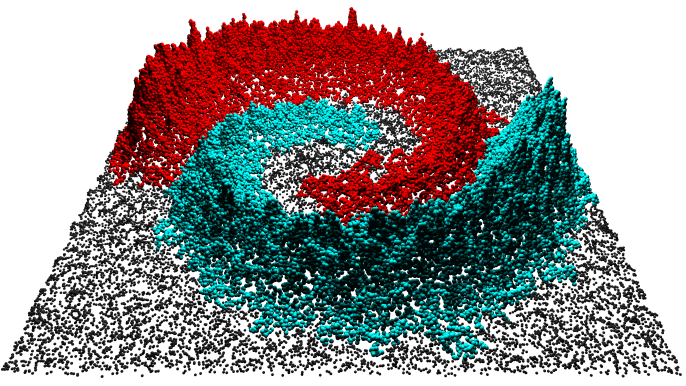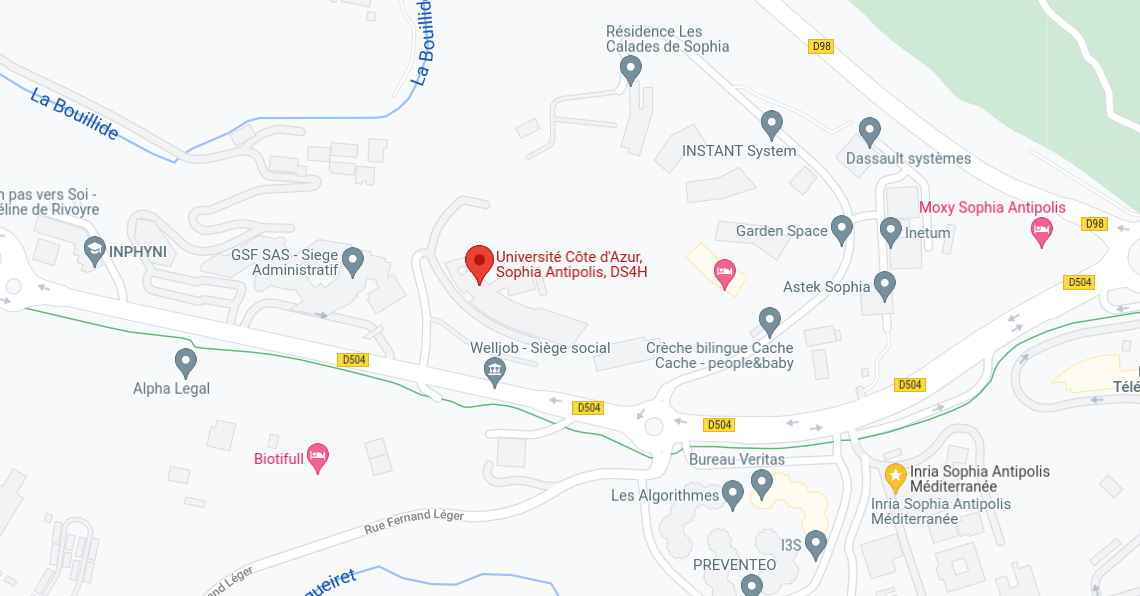Description

Modeling in biology and medicine raises challenging questions for
objects spanning multiple scales (from molecules to populations).
The goal of this course is twofold. First, to develop fundamental
geometric, topological and machine learning algorithms, which are well
understood in terms of performances and guarantees. Second, to use
these methods to get insights on complex questions in biology and
medicine, either at the simulation stage, or the post-processing /
data analysis stage. Application domains include protein structure
and function, gene expression, and the
analysis of spatial transcriptomics data.
For any questions or concerns please contact Jean-Daniel Boissonnat at Jean-Daniel.Boissonnat[at]inria.fr, Mathieu Carrière at mathieu.carriere[at]inria.fr, or Frédéric Cazals at frederic.cazals[at]inria.fr
Close
Outline
The course consists of the following ten lectures (3h each):
1. Dimensionality reduction methods and complex non-linear motions
2. High-dimensional volumes and densities of states in statistical physics
3. ToMATo for colocalizing cell types
4. Rips persistence for marker gene correlations
5. Triangulation of point clouds
6. Statistical tests and application to molecular simulation
7. Multi-persistence for immune cell arrangements
8. Meshing non linear manifolds
NB: course material (slides, notes) will be provided after the lectures.
Close
Class 1
Dimensionality reduction methods and complex non-linear motions
Dimensionality reduction methods aim at embedding high-dimensional
data into lower-dimensional spaces, while preserving specific properties
(pairwise distance, data spread, etc). This lecture will overview
selected DR techniques, and apply them to study molecular motions.
- PCA, MDS, diffusion maps
- Application to collective coordinates and the parameterization of molecular motions
Close
Class 2
High-dimensional volumes and densities of states in statistical physics
Statistical physics commands to compute observables / macroscopic
properties of molecules using averages over selected so-called
ensembles. This lecture will develop algorithms to compute
high-dimensional volumes, and the random walks used therein will be
used to sample molecular conformations.
- Monte Carlo Markov Chain methods and polytope volume calculations
- Application to sample molecular conformations
Close
Class 3
ToMATo for colocalizing cell types
Slides, Tutorial, Practical Session,
Solution of Practical Session
Close
Class 4
Rips persistence for marker gene correlations
Slides, Practical Session,
Solution of Practical Session
Close
Class 6
Statistical tests and application to molecular simulation
Molecular simulations explore complex high-dimensional spaces, and two
critical questions are to (i) compare ensembles of conformations
discovered, and (ii) assess the convergence of a simulation. This
course will develop fundamental techniques for both questions.
- High-dimensional two-sample tests
- Application to the comparison of molecular ensembles and the convergence of simulations
Close
Class 5
Triangulation of point clouds
This course will introduce fundamental models in computational geometry
and topology that are relevant to represent complex shapes.
- Simplicial complexes and filtrations
- Delaunay triangulations and Voronoi diagrams, randomized algorithms
- Molecules and alpha-shapes
Slides.
Close
Class 8
Meshing non linear manifolds
Constructing faithful discrete approximations of complex shapes is a preprocessing
in many applications such as visualization or numerical simulation. The case of surfaces
in 3-space is the most important in medical applications but the study of their higher
dimensional analogue is of utmost importance when considering dynamical systems.
Crucial aspects are here topological and geometric correctness and complexity issues.
- Grids and triangulations to mesh surfaces
- Coxeter triangulations and meshes of higher dimensional manifolds
Slides.
Close
Class SMS
Sampling and Meshing Submanifolds
Summary
Restricted Delaunay Triangulations to a surface. Closed ball property.
Marching cube and simplex algorithms. Coxeter triangulations.
Exercises
Complexity Analysis of the Marching Tetrahedron Algorithm.
Slides
Bibliography
Geometric and Topological Inference, ch. 7-8
Close
Class 7
Multi-persistence for immune cell arrangements
Slides, Tutorial
Close
Class TML:A
Topological Machine Learning (II): Guiding ML models
Close
Location

Classes will take place at Sophia Antipolis, M2 room, Campus des Lucioles, 1645 route des Lucioles, Biot 06410.
Close
Validation
This course is validated with data science projects.
Close

